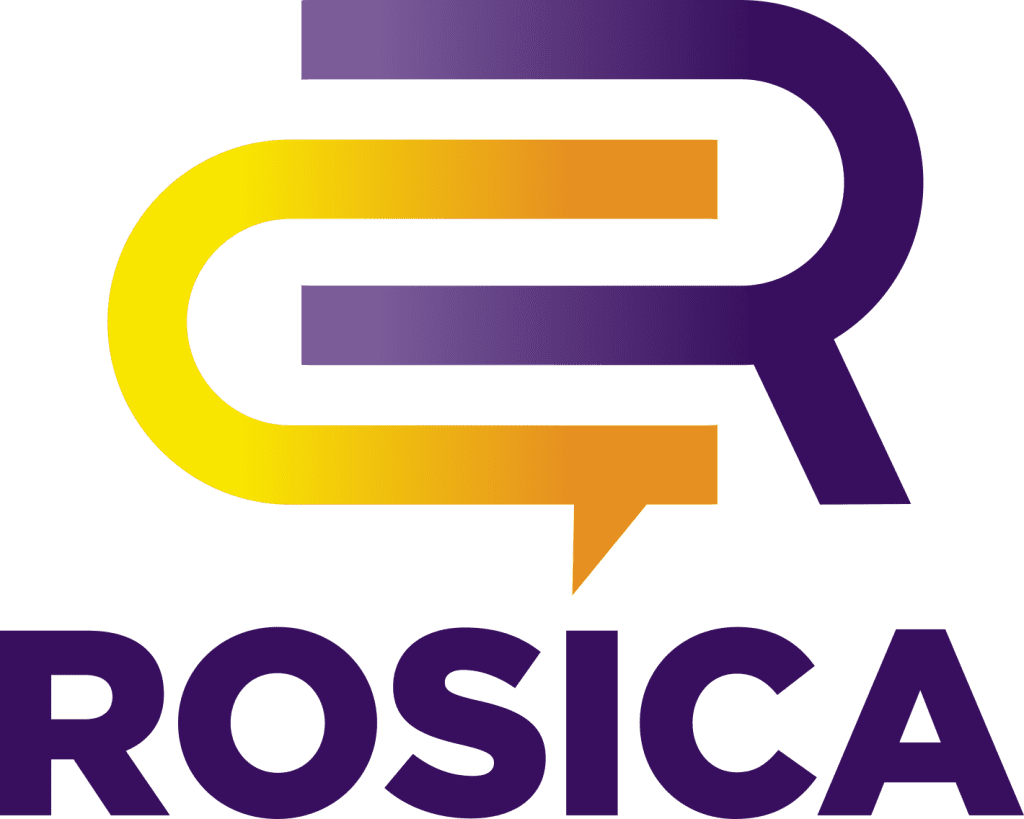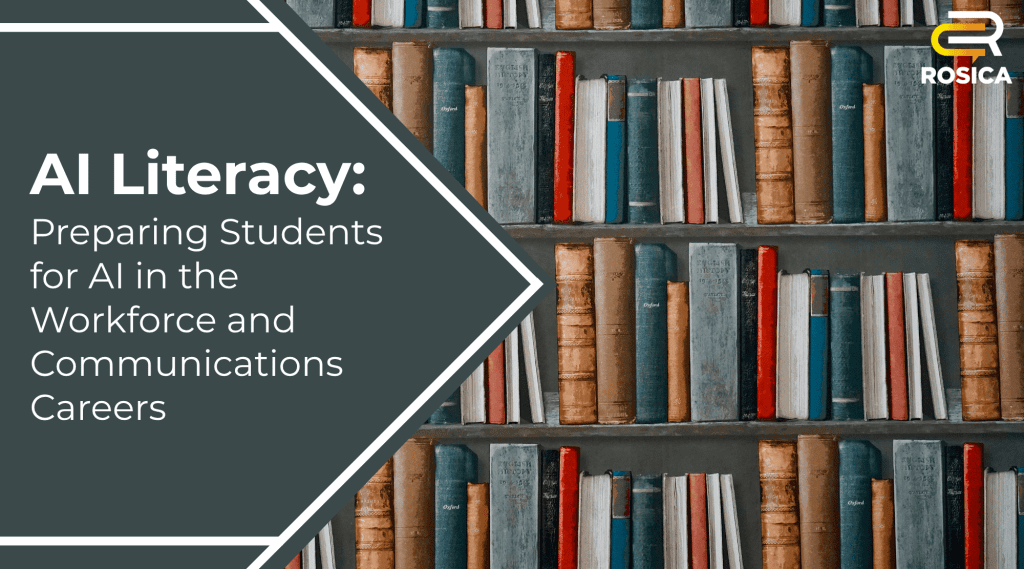Artificial intelligence is reshaping how we learn, work, and live, forcing schools to adapt faster than ever. As AI tools become integrated into classrooms and curricula, the pressure is mounting on educators to prepare students for an AI-driven world. The challenge is not only about teaching technical skills; it’s about communicating AI’s role clearly and responsibly to students, parents, and communities where resistance may come into play.
How school districts communicate about AI will determine whether innovation is embraced as opportunity or feared as a disruption or worse yet, as something to avoid because it is misunderstood.
AI Literacy in Schools
AI literacy is rapidly becoming a priority for education. It encompasses how students understand, use, prompt, guide, and question AI tools. Districts and state departments of education are introducing AI-focused curricula, often tied to ethics, digital citizenship, and workforce readiness.
While many stakeholders welcome these timely curricula, skepticism exists around data privacy, algorithmic bias, and the degree to which technology should shape learning. In this environment, an education PR agency plays a critical role in shaping perception and educating school communities. Through transparent communication, districts can position themselves as proactive and responsible, balancing innovation with accountability.
Effective messaging should frame AI literacy not as a technology lesson but as a foundation for critical thinking, creativity, and civic responsibility. especially critical thinking, which scoffers feel is threatened by artificial intelligence.
Communicating AI’s Importance Without Alienating Stakeholders
Parents and educators often worry that AI might replace human teachers, widen equity gaps, or increase screen dependence. The solution lies in strategic messaging that positions AI as a tool that enhances, not replaces, human creativity, thought, and connection.
By emphasizing that AI supports educators in personalizing instruction and freeing up their time to mentor students, one-on-one, schools can ease some concerns. Storytelling is critical here. Superintendent and teacher op-ed articles, classroom success stories, and student project profiles can showcase and humanize AI, demonstrating its quantifiable benefits.
A strategic media relations agency can help elevate these stories through earned media placements, interviews, social media content, and feature stories, ensuring that school leaders shape the public conversation instead of simply reacting to it.
Utilizing Thought Leadership to Promote AI’s Benefits
As AI continues to influence education, superintendents and other administrators have a unique opportunity to become trusted voices guiding the national dialogue. Thought leadership articles, conference speaking engagements, and district-led community forums can demonstrate a balanced, ethical approach to AI adoption.
These communications activities demonstrate the district is not experimenting recklessly with technology but leading responsibly. When leaders articulate how AI serves educational and societal goals, they gain credibility and influence.
Consistency is essential. Thoughtful messaging and media training ensures educators and administrators communicate with authority and clarity.
Codifying an AI Policy and Governance Framework
Every district must formalize its approach to AI with a clear, public-facing policy. This document should outline acceptable use, human oversight, data privacy, accessibility, and equity safeguards. But it cannot be static; it must evolve as technology, policies, and classroom applications change.
A cross-functional governance committee can oversee these efforts, bringing together curriculum leaders, IT specialists, legal counsel, and communications professionals. This team should review AI tools, approve pilot programs, and update policies regularly to reflect the rapidly changing landscape.
Vendor requirements must include transparency around datasets, bias testing, and data retention practices. By insisting on these standards, districts set expectations for ethical AI partnerships.
Communicating the existence and purpose of an AI policy is equally critical. Public summaries, teacher training sessions, and community updates reinforce transparency and invite dialogue. Collaboration with an education PR firm or crisis communications agency helps ensure messages are strategic, impactful, and aligned with a district’s core values.
AI Crises Communications
With every innovation comes risk. AI adoption introduces reputational vulnerabilities from biased algorithms and data breaches to controversies around pilot programs or surveillance fears. When issues emerge, response speed and message development are paramount.
A comprehensive crisis communications plan should include AI-based scenarios, defining response protocols, the chain-of-command approval process, and specific messaging for such stakeholders as teachers, parents, media, and key partners. Simulated crisis “fire drills” and ongoing media training help leaders anticipate tough questions and maintain composure during interviews, particularly when they receive unexpected, challenging questions.
As a national crisis communications agency, Rosica has seen how proactiveness and preparation build trust and prevent incidents from escalating. Schools that anticipate potential scenarios emerge stronger, more transparent, and better positioned to maintain public confidence.
Measuring Success in AI Literacy Communications
AI literacy success cannot be measured by technology adoption alone. It must also account for stakeholder trust, student engagement, and positive community sentiment.
Metrics that matter include quality of media coverage, digital visibility across owned and earned platforms, and sentiment analysis from community feedback. These insights provide a complete picture of whether communications efforts are fostering confidence and understanding, or not.
Integrated marketing communications tie these activities together, ensuring consistent messaging across digital content, traditional media, internal communications, and stakeholder comms. Using the Thought Leadership Measurement Matrix™ can help education leaders connect PR and communications outcomes to district goals, proving the value of strategic PR in driving meaningful impact.
Conclusion
AI literacy represents more than a curriculum change; it signals a shift in how schools communicate about innovation, ethics, and jobs of the future. Districts that frame AI thoughtfully, establish clear policies, and prepare for challenges are far more likely to lead… and succeed.
By integrating public relations, thought leadership, crisis management, and digital strategy, education leaders can shape the narrative around AI and empower students to thrive in a technology-driven world.
About Rosica Communications
Rosica Communications is a national PR and crisis communications agency with decades of experience helping school districts, nonprofits, and mission-driven organizations protect and elevate their reputations. As an award-winning crisis communications firm, Rosica partners with education leaders to manage challenges, enhance transparency, and amplify positive stories that build community trust.
Rosica developed the proprietary Thought Leadership Measurement Matrix™, a tool that evaluates and optimizes thought leadership programs to ensure they generate measurable ROI.
Learn more by scheduling a call with Chris Rosica: https://calendly.com/rosica/30min.

